Tags

Clear Lake Settlement
Just west of this monument is the former town-site of Clear Lake. This town was not sponsored by the Mormon Church; instead, it was created by the coming of the railroad. Both the railway grade and tracks were laid at this site in the Spring of 1880. It was then the name “Clear Lake” was first used on a railway siding, then a station, and later the small town of Clear Lake.
Before Clear Lake siding was established, there was an Indian trail running west from East Milliard, past a swampy area and a big spring known as Clear Lake, to the Deep Creek Mountains near the Nevada stateline.

As early as 1871, there was some ranching or farming activity along the lower Beaver River south-west of Pot Mountain. Before dams were constructed and water diverted for farming upstream, water from spring runoff would flow past this area and into the West Desert.

The siding was built here because the railway line crossed a wagon road running west from Fillmore and East Millard, to the West Desert ranching communities of Garrison and Gandy. This was where anyone wanting to board a train for Salt Lake City, or Milford and the Frisco mines in the south, would come.
Few records exist for those early years, but Clear Lake siding soon had activity so a station or depot of some kind was constructed for people using the trains. Also, it appears someone likely created an inn or boarding house with a corral and barn for animals. The first people to set this up was the Crockwell family (a father and grown son and their wives). On March 28, 1881, the first post office (Called Clair Lake) was opened with Mrs. Millie Crockwell as postmaster. On May 18, 1881, the name was changed to Clear Lake to correct the error. On April 5, 1883, the post office was closed for unknown reasons.
In about 1890 or a little later, the Charles J. (father) & Charles W. (son) Aldrach families moved from Kansas to Utah. By 1893, they along with about 100 Quakers, began work on the Swan Lake Reservoir project west of Clear Lake. Sometime later, the Swan Lake dam burst, ending that attempt at settlement. In the same time period, the Aldraches bought out some of the settlers in the Clear Lake area and created the Clear Lake Land & Irrigation Company. They were the first to develop land around Clear Lake which seems to have been coupled originally with the Swan Lake project.
In November 1893, the C. L. L. & I. Co. was sold to the Trust Company of America with Timothy B. Sweet, president. On October 25, 1894, the Clear Lake post office was reopened with C. J. Aldrach as postmaster. The Aldrach families stayed in Clear Lake for several years, but C. J. and his wife died sometime before 1904 and are buried next to the road at the base of Pot Mountain. An 8 foot (2 1/2 meter) high metal cross marks their gravesite.
Throughout the years, people were coming and going from Clear Lake. Emory John arrived for the first time in 1893. He was a Quaker from Illinois and was likely involved in the Swan Lake project. Sometime after he left, but returned with a younger brother, Barclay John, in 1897. They helped build a canal from the lake to the townsite of Clear Lake. Virgil Kelly was hired to supervise that project. This new water helped create a farm & ranch at Clear Lake town. Their main crop was alfalfa. In 1898, Emory and Barclay’s parents, Hugh & Laura John, arrived and bought land west of Pot Mountain but they didn’t stay long.
In 1905, Sweet hired Hyrum Bond of Meadow to come work on the Ranch in Clear Lake. Emory John was the Ranch foreman until 1908, then Hyrum Bond took the job until 1912. In 1912, Timothy B. Sweet sold the Ranch to J. C. Gafford, another man from Kansas. Gafford brought a man named Snyder and his family to manage the place and tried hard to promote Clear Lake as a wonderful place to live and farm. In 1920, Gafford sold out to Dan H. Livingston, a Mormon from Salt Lake City. He owned property all over Utah but beginning in about 1930, the Great Depression took hold and by 1932, banks took possession of his property and it went into receivership. Livingston was gone by 1932. Some farming continued at the Ranch while it was in receivership, but the town of Clear Lake began to die.
Fore many years, the State of Utah wanted all the water in the Lake to be part of a wildlife refuge, so they took the water the town of Clear Lake depended on for farming (drinking water was always brought in by the railroad). In the end, the Bonds turned over their holdings to the John family in 1937; the Johns took the State to court. The Johns won in court but Clear Lake town lost its water — and died. In the 1937 time period, all the homes and school were hailed away to Fillmore, Deseret, Sutherland or Delta. Barclay John and his family moved to Salt Lake City in 1937, but Emory stayed until the early 1940’s. Hyrum Bond and his family had moved to Meadow in 1935. Floyd Hardy became section foreman for the railway in 1947; then he and his wife Donetta lived in the section foreman’s house until 1952. They were the last people to live in Clear Lake. The railway depot was taken to Delta in 1952, made into apartments, then torn down in October 1991.
The Clear Lake Hotel
Soon after Clear Lake siding was established in the spring of 1880, the Crockwells had some kind of boarding house. In the early or mid-1890’s, Aldraches built a hotel west of the Clear Lake Station. Over the years, the known hotel owners were the Aldraches, George & Laura Marley, Margaret A. Dorrity, Carl Gordon, Jack Watson, and finally, Hyrum & Lovita Bond.
The Bonds bought the Clear Lake Store & Hotel in 1909 while he was foreman at the Ranch. In 1912, the Bond family moved across the street from the Ranch into the store & hotel, which included the post office. Hyrum Bond was postmaster from 1909 until 1935. Other members of the Bond family lived there through 1937. The Clear Lake Post Office closed forever on December 31, 1937. The last official postmaster was Hyrum’s son, LeRoy (Roy) Bond.
Clear Lake School
The Clear Lake School was built on 1900 and school was taught until 1930-’31. Only one teacher taught 1st through 8th grades in the 2-room building. However, during the 1921-’22, 1923-’24 and the 1927-’28 school years, there were not enough students to fund the school, so there were no classes taught in those years. During those tomes, families with children had to move to another town or send their children to live with relatives in towns with schools. For this reason, few of the kids who grew up in Clear Lake ever went to high school. For the most part, it was the many children of the John & Bond families who sustained funding for the school over the years.
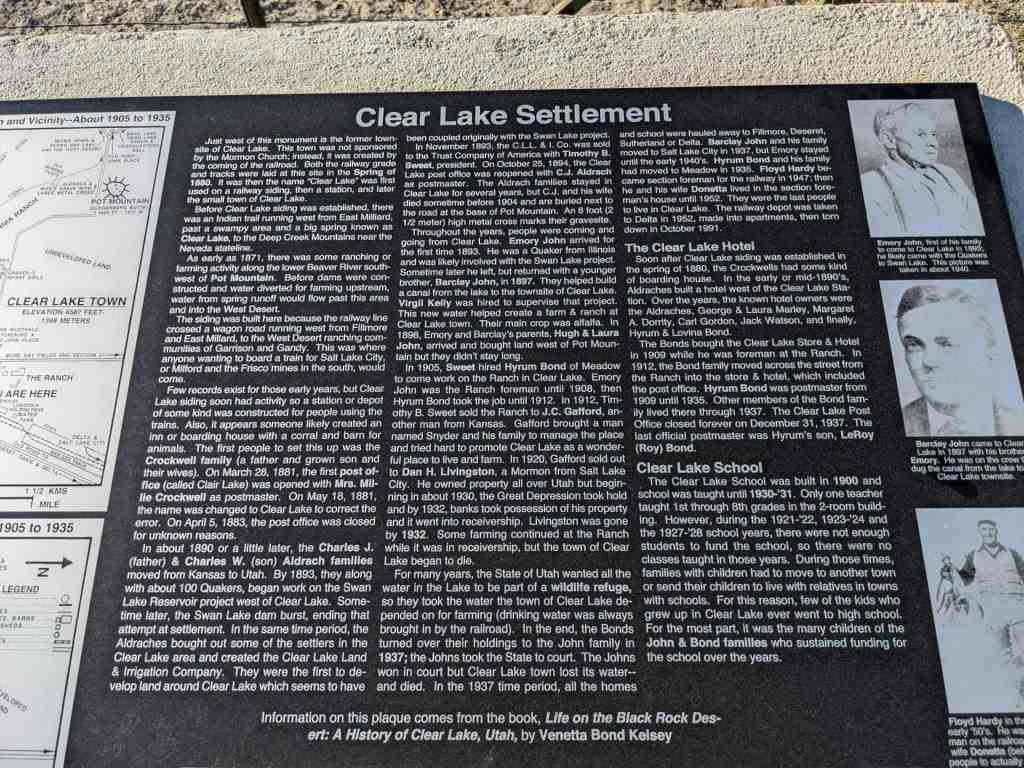



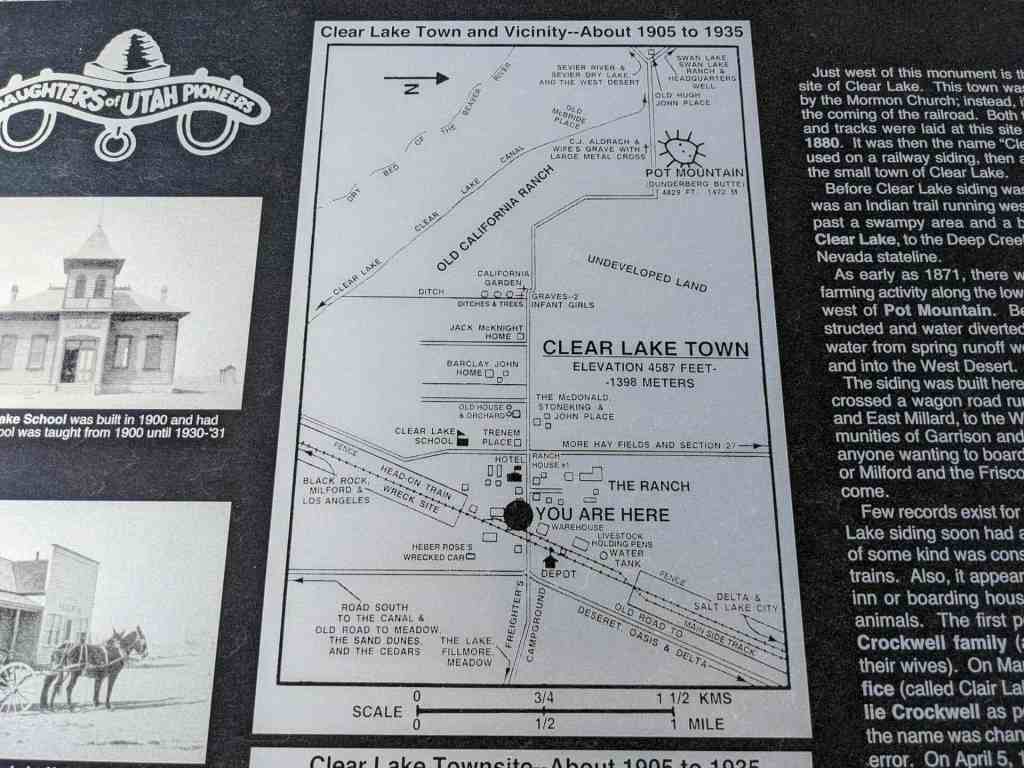





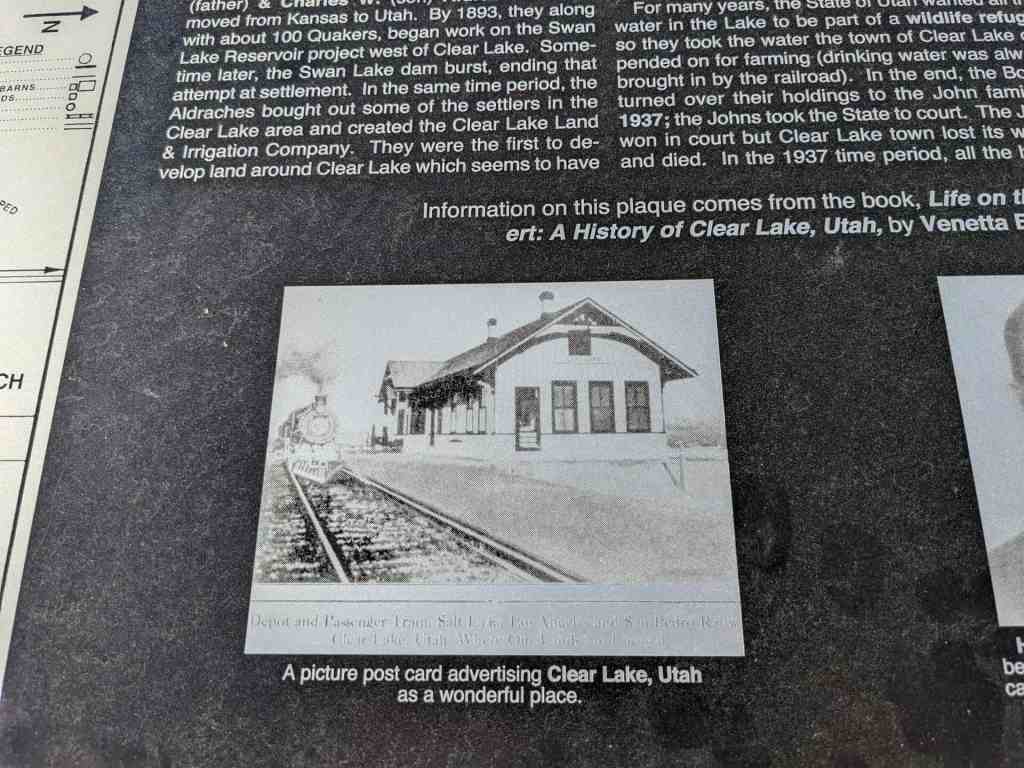


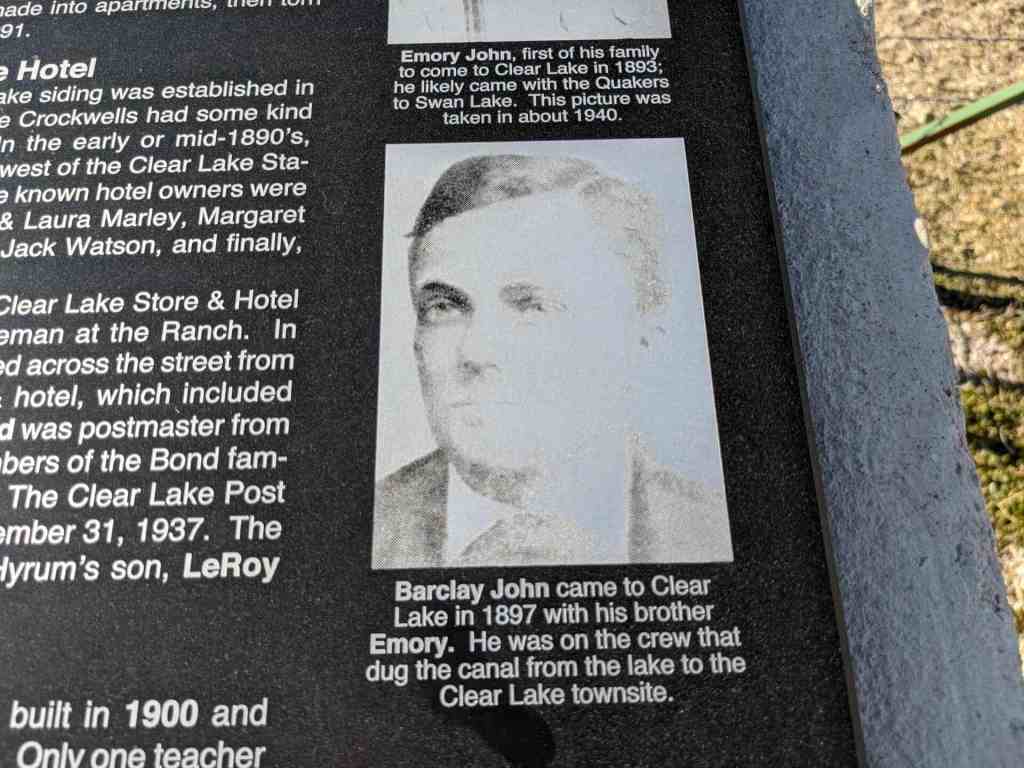


This is D.U.P. historic marker #577, located at about 16000 South Highway 257 between Delta, Utah and Milford, Utah.
Related:
These two images were found on facebook and are pictures of pictures in the Great Basin Museum in Delta, Utah.
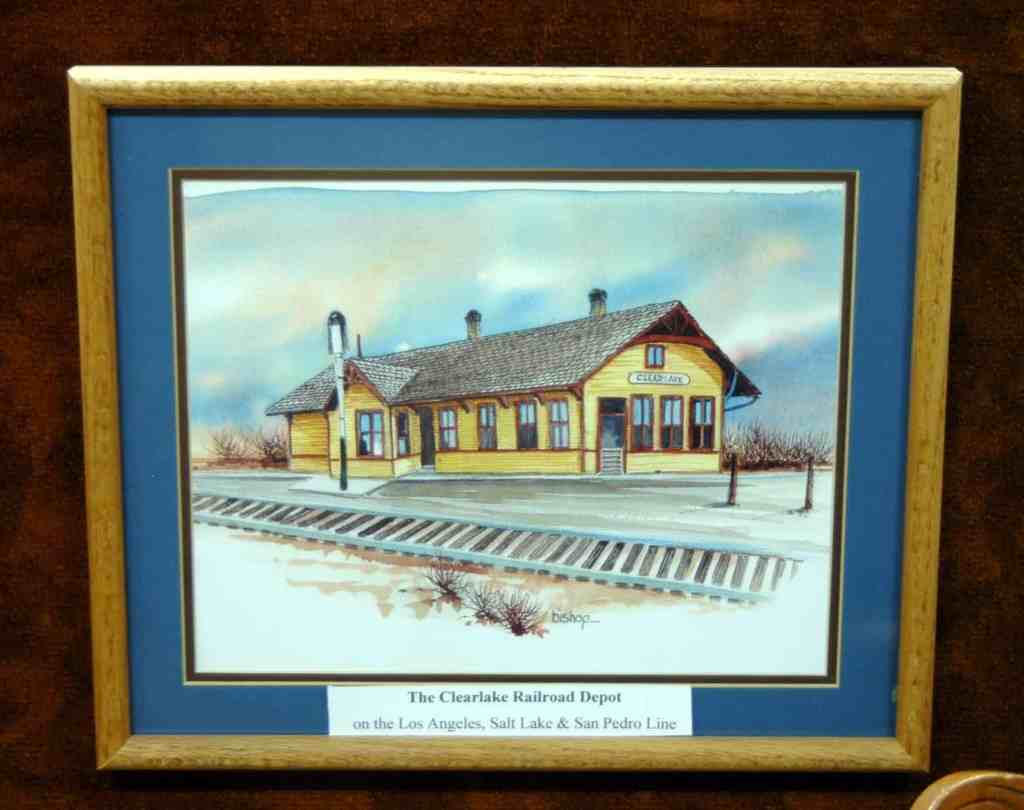
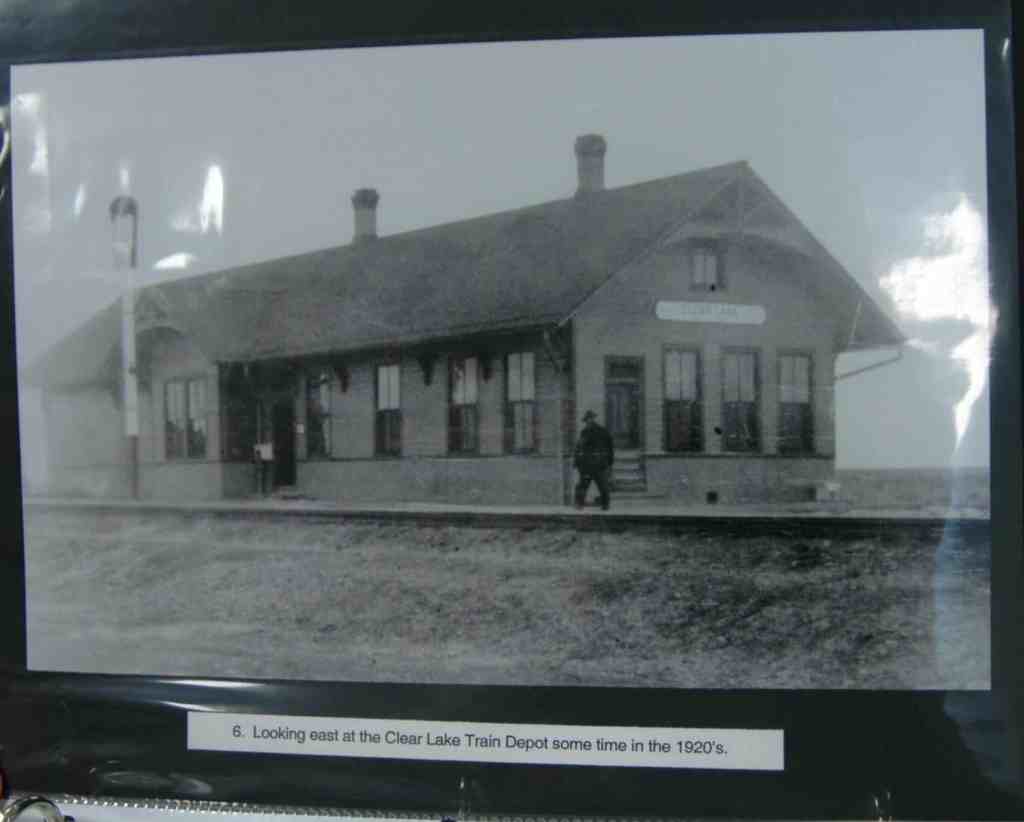

FANTASTIC posting! This post helps solves a life long mystery of why my ancestors went “to Clear Lake” or “died in Clear Lake.” Being from Joseph, Sevier County, I had assumed it was somewhere associated with the actual Clear Lake. You’ve opened up a whole new dimension. Thank you so much! Richard
I’m glad I could help a little!
More than you’ll ever know. In charge of 75+ family reunion in Joseph this Thursday and Friday. This information is so amazingly timed